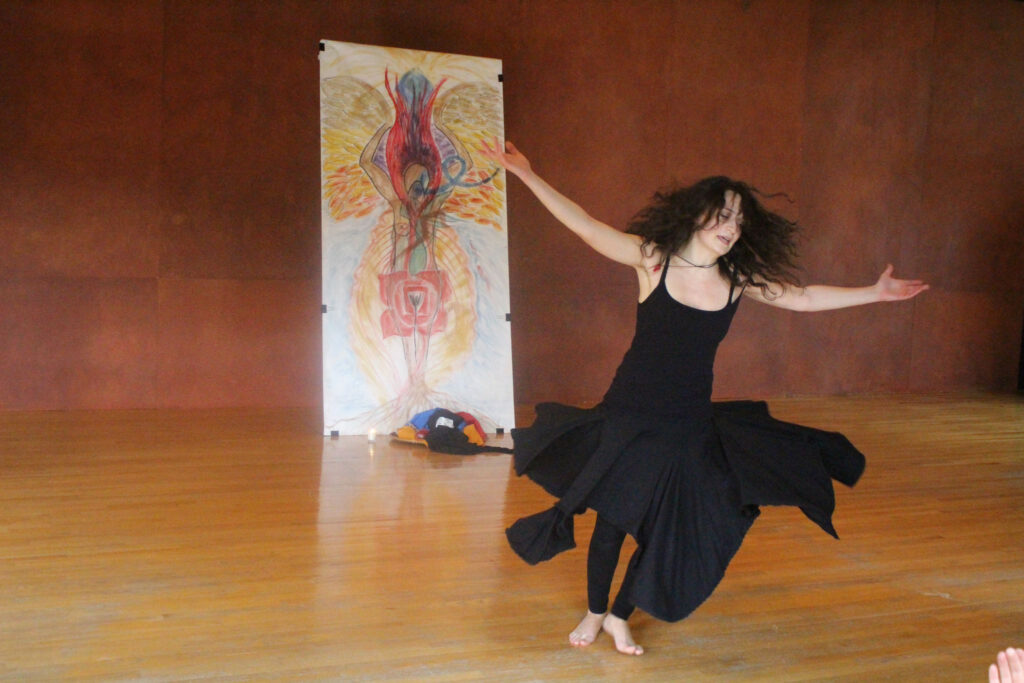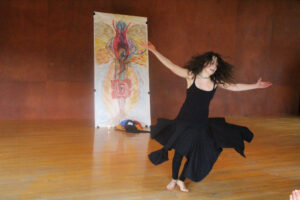Defending Creativity

DEFENDING CREATIVITY
The necessity of art in a crisis-driven world
“Without art, the crudeness of reality would make the world unbearable.”– George Bernard Shaw, Irish playwright
It is easy to forget how fundamental art is in our daily lives. Art surrounds us with pleasure and enrichment. We eat ‘art’ as culinary cuisine at home and in restaurants, buy ‘art’ through fashion at clothing stores, and read ‘art’ in our papers and blog posts. We view ‘art’ through color, shape and light in our environments. Art oozes out in the tone of our voices, it is music in the background at coffee shops, we see it in our movement as we walk down the street. Every choice we make can be considered a creative act. Each birth is a creation; as we grow, our lives become our story, our composition. In tandem with the aesthetics and nourishment of art is the creative act itself, which is how any idea is formed. Creativity is defined by finding a fresh perspective, transcending traditional ideas, developing new ideas, being progressive, original and imaginative.
After twenty-five years of schooling, teaching, and practical art applications to life and work, I have solid evidence to ‘make my case’ for creative expression. I have shown my photography at Midwest galleries, been an art curator in a forward-thinking institution, created performance art from vulnerable personal stories, taught art to children and been a music DJ spinning new wave records in the late 80‘s. I have played guitar and written soulful poetry. For the past fifteen years I have worked as an art and movement therapist guiding people to heal from deep wounds stemming from addiction and eating disorders. I have been gifted the opportunity to educate people from around the world to learn how to use art towards personal and collective change and growth. All of these experiences have illustrated to me how profound art can be, and that there is no limit on creativity, it is a never ending source for us. Yet, it is not instinctual for most of us to pursue creative options when the going gets tough.
Swiss teacher and visionary Paolo Knill, a founder in the work of expressive arts therapy (a field focused on personal and collective healing through interdisciplinary art), describes an interesting process called decentering. Decentering is an expressive arts method that brings us to creative solutions. In life we are constantly hitting walls, getting to the end of our rope, and losing orientation as the bottom drops out. We experience a loss, discover emotional and physical limitations and get trapped in addictive cycles. Increasingly people find themselves disillusioned in this modern age of environmental destruction, terrorism, isolation and burnout. If we find ourselves stuck in a dispirited and desperate place, we often try harder and push to get out, or alternatively surrender and anesthetize. Decentering gives us another solution: be imaginative and creative.
Eight years ago I lost my husband to lung cancer and found solace in grief counseling, supportive therapy and the company of friends. After such a dismantling experience, taking time to heal was mandatory. I needed to give myself permission to feel lost for a while as my life reshaped itself. However, years after the loss many things were still unresolved, more than I was comfortable with. I kept having recurring dreams about my husband that were disturbing and I often felt that I couldn’t fully move forward. Since I preach about the power of art in my work, it was clear that I needed to apply the same principles to myself. I took space in the midst of a busy life to decenter and dive into a creative process. This required that I listen to my imagination and sink into a potent place, where I could tap into a greater source.
For me, art making is a spiritual practice, not ‘new age’ or fanciful, but extremely practical. As Stephen K. Levine, writer, expressive arts teacher and philosopher says in his book Poiesis, we can “rest(s) on the premise that imagination is the healer, that encouraging the soul to speak in its own way transforms darkness into light, the hidden and concealed into the open, and thus provides insight and release.” What I have learned is that by decentering into art and imagination one can return to the problem at hand with a new perspective. Then we can inquire and ask ourselves, What did I discover? How can I apply these findings to my life? As I gave myself time to venture into my own creative excursion I was richly rewarded. Not only did I gain a different vantage point and more insights to face my challenges, I also decided to make a performance and a film about dreams, memories and grief. Working on this creative project took several years and during this time I made the decision to move in with my current partner, which brought more commitment to my new life. The nightmares stopped, replaced by a mind more focused on the present and a body able to move more freely.
Art gives us a break. It can enhance our experiences and take us to another world where all things are possible (if only in our imagination at the outset). We are dependent on entertainment to wind down and escape, to observe things otherworldly, emotional, magnificent and magical. We know the potency of hearing people’s stories, and the inherent strength we receive from age-old myths and the journeys of the protagonists who share their failures and successes along the way. Ancient cultures were defined by rituals that used dance, myth, painting, and music to endure transition and crisis. What I continue to notice, as I guide people through my private practice and teaching, is that the personal act of authentic storytelling and the art rituals that can enable us to move through our struggles are not necessarily easy to access. They are seen as either indulgent, esoteric or out of reach. But, when we really stop and think, we might recognize that our daily lives are built on stories. We are shaped by tales of our ancestors, memorable news stories based on world events, fictional books and screenplays built on people’s true life experiences. Stories of survival and success often motivate people to become leaders, teachers, politicians and change agents in the world.
When I witness my clients or students taking the risk to tell their stories and use their imagination as a way through an impasse, I am inspired and encouraged. I see an expanded world. In his book Imagine, Jonah Lehrer gives us a window into how creativity works in our modern age, “Because we live in a world with very hard problems…many of the most important challenges exceed the capabilities of the individual imagination. As a result, we can only find solutions by working with other people.” I have seen people recover from drug and alcohol addiction by being a part of groups that encourage honest sharing about what happened to them and the stories they tell shape and sustain their sobriety. These communities gave them confidence and energy to write books, create theater and bring their musical talents to others. I have used art to help women reclaim their bodies and spirits from eating disorders, who then found courage to bring movement and arts classes to others with eating disorders and body shame. I have watched stunning dances performed in honor of deceased loved ones that have been profoundly healing for the dancer and provided an emotional release for the witnesses. I have had the privilege to watch a student’s performance that illustrated the devastation of genocide on her Armenian family lineage – and that performance resulted in the impetus for political activism in the audience members. If we can empower ourselves through art and claim what is truly ours, we provide the opportunity for others to do the same.
There are times when expression is the key, and other times we are simply asked to be more original in our thinking. Recently a talented video game developer I coach was in a dry spell with his business. He worked from home and was bogged down by his routine and life demands. For years he pushed to find the motivation and enthusiasm for his projects, resulting in fear of financial security and depression. We kept turning the problem on its head, looking for ways through. Our dialogues and collaboration yielded a simple fix. It was time to stop working at home and find a co-working space to meet with other indie game developers. He changed his environment and his view. Within weeks of the office move, he was productive again, full of energy and ideas. As we expand our creative resources, we soften our struggles, help others along the way, and uncover untapped possibilities. Art is at our fingertips. It can be found among the storms, in empty spaces, and in our dreams. Author Jonah Lehrer states, “Creativity shouldn’t be seen as something otherworldly. It shouldn’t be thought of as a process reserved for artists and inventors and other “creative types”… It is about our most important mental talent: the ability to imagine what has never existed.” Anytime something new is brought to life, it usually starts with a problem. The solution is discovered by using our imagination and envisioning a better life for ourselves and the world around us.
Self Published July 2015
